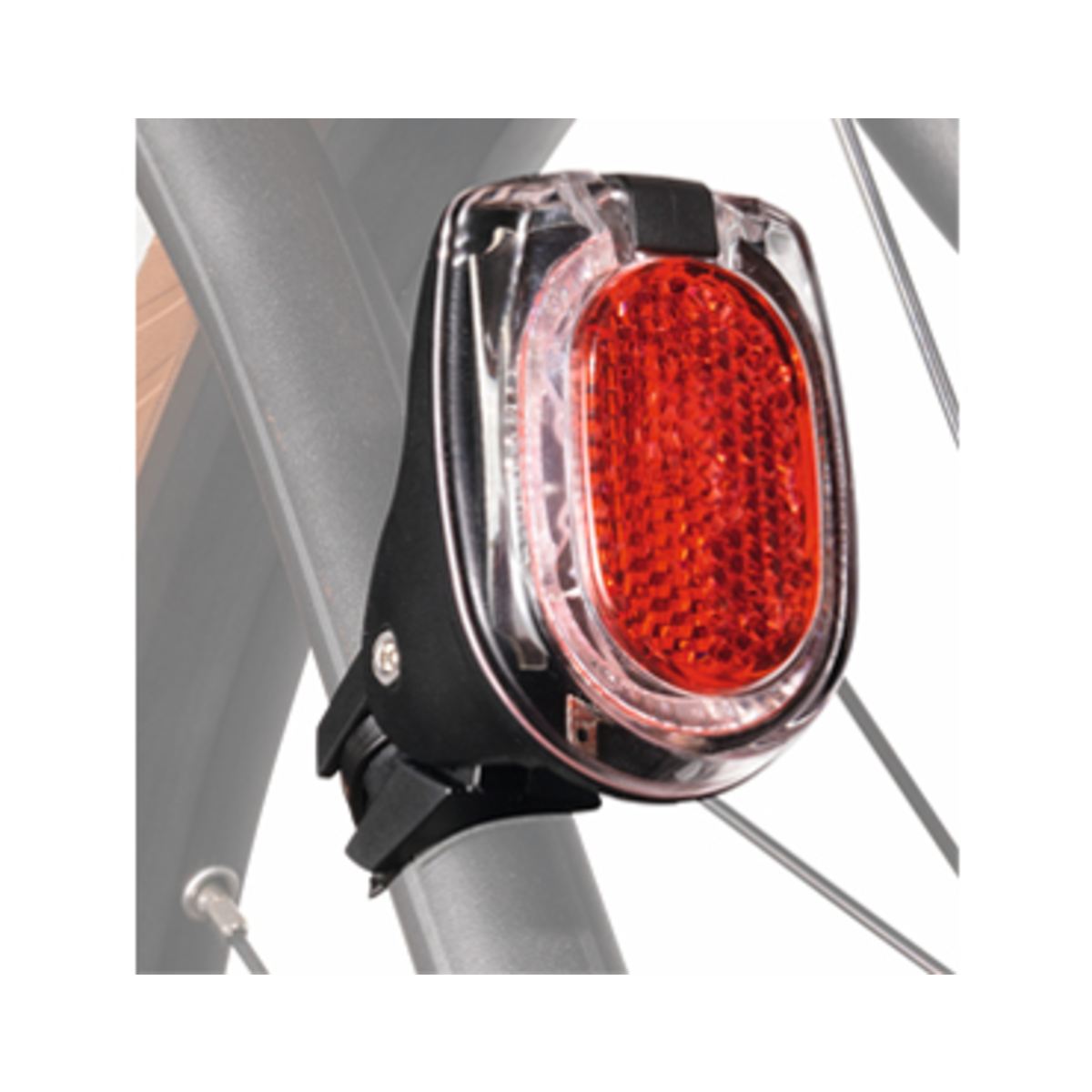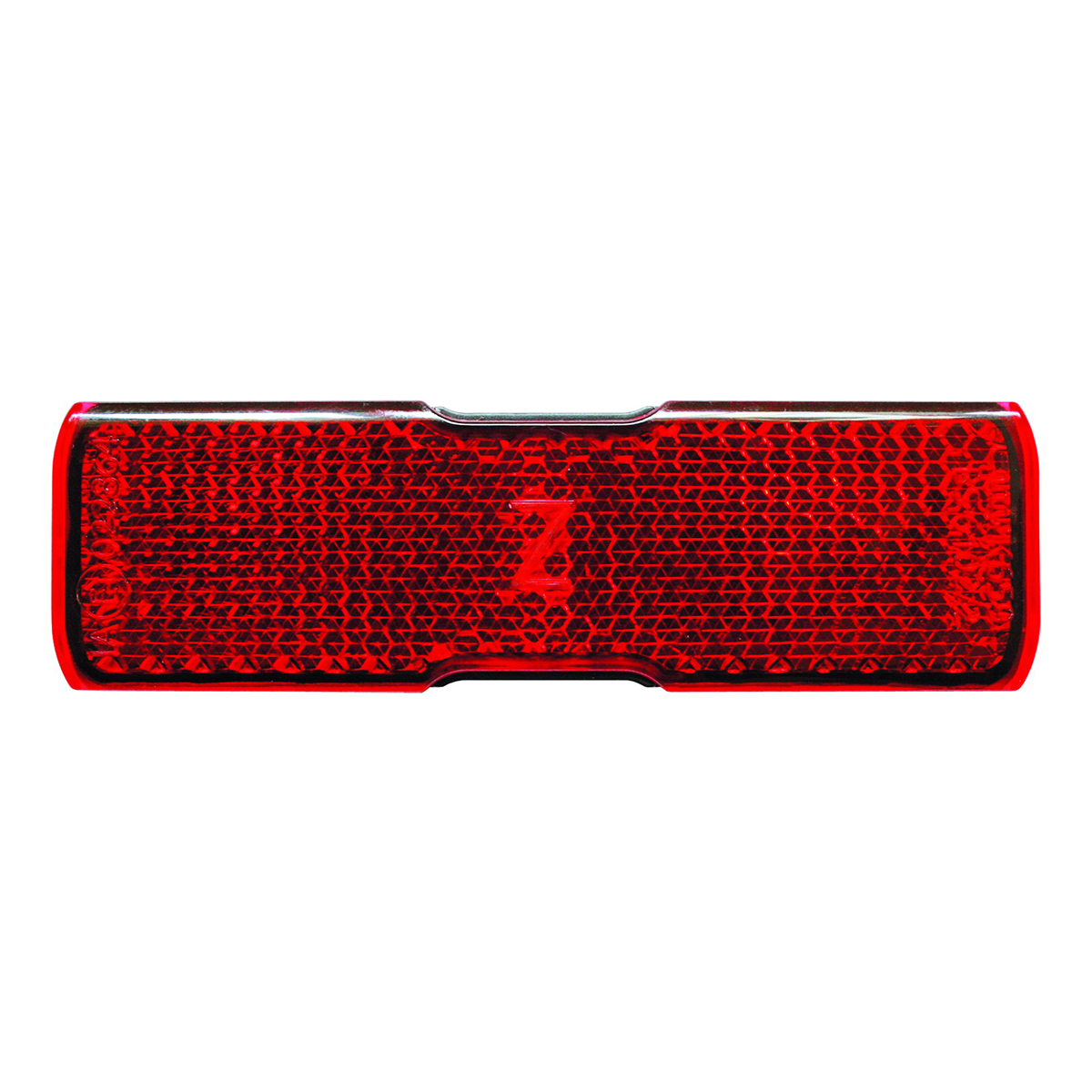SEE AND BE SEEN: EVERYTHING YOU NEED TO KNOW ABOUT BICYCLE LIGHTING
To ensure that you as a cyclist have good visibility while riding and are easy to spot by other road users, you need lighting for your bike. In many countries, the design of bicycle lighting is regulated by law, such as in Germany through the Road Traffic Licensing Regulations (StVZO): these dictate that front and rear lights and various reflectors are mandatory. However, there is a wide range of effective bike lighting options. In addition to many useful features, your bike can also be equipped with a high beam and brake light. Battery-powered or battery-operated lighting systems are also permitted in Germany. How do you choose the best lighting for your bike from the many options? Which lighting technology suits your bike and you? And what do lux and lumen values mean?
THE RIGHT LIGHTING ON YOUR BIKE: FRONT AND REAR LIGHTS
Did you know that there are active and passive elements for bicycle lighting? Active elements include front and rear lamps that generate their own light and are powered by a rechargeable battery, batteries or a dynamo. Passive elements include reflectors , which do not need a power supply because they reflect back light that strikes them.
Front headlights emit white light in front of the bicycle. Manufacturers use either a conventional incandescent lamp, one or more LEDs, or a halogen lamp as the light source. There is also often an integrated parking light that provides your bike with light even when stationary.
In addition to the front headlight, bicycles in Germany must be equipped with at least one rear red light, according to § 67 of the StVZO. The rear light is powered by dynamo, rechargeable battery, or battery. The lights must be mounted at least 25 centimetres above the ground. With the SON seatpost rear light, the high-power LED light is fanned out laterally onto two grooved profiles, for example. With these two light sources next to each other, the traffic behind you can better assess the distance visually – a significant contribution to your safety. Of course, you can also buy sets of headlights and reflectors. Examples include the lightweight SIGMA SPORTSTER/MONO RL lighting set with long battery life and two brightness levels or the Busch+Müller IXON CORE / IXXI DIODEN-RÜCKLICHT set with aluminium housing at the front and a seat post light at the back.
Also, a brake light function is permitted in Germany. For example, the Busch+Müller TOPLIGHT LINE BRAKE PLUS detects braking manoeuvres via the hub dynamo and indicates them to other road users. When cycling off-road you can also optimise your bike lighting with an additional LED headlamp on the helmet. With the SIGMA BUSTER 700 HL, for example, you can ensure ideal cornering light.
FIRST POINT TO CONSIDER: DYNAMO OR BATTERY TO POWER THE BIKE LIGHTING?
It still exists – the classic dynamo that is powered by the rotation of the wheel. Modern hub dynamos, e.g. from Shimano, now deliver energy with much less resistance, so you don't have to pedal as hard. Dynamos have some advantages:
- Hub dynamos are protected from external influences such as moisture.
- They are low-maintenance, reliable and require little repair.
- You’ll never ride without a light again – a dynamo is permanently installed and is therefore present on every ride.
- Many lamps offer sensor functions. These switch on automatically or change automatically from day to night riding lights. This feature is most reliably in combination with a hub dynamo, as this provides a continuous current.
- If you ride with a dynamo, you will never ride in the dark, because there are no batteries that can suddenly run out of energy.
- Many models allow you to switch between power and economy mode.
- They are particularly small and light and also fit into a jersey pocket.
- Some of them have very long burn times.
- Some models are compatible with exchangeable batteries.
SECOND POINT TO CONSIDER: LUMEN AND LUX AS IMPORTANT VALUES FOR LIGHTING ON YOUR BIKE
Lights approved for road use offer between 15 and 150 lux, lights for off-road use often more. The minimum value required by German law is 10 lux – but this is more about "being seen" than about being able to see at night. By the way, you can recognise all lights approved according to the StVZO by a K with a wave symbol on the housing.
Especially with more powerful lights, manufacturers tend to state the lumen value. But what do lux and lumen mean? The unit lumen (lm) describes the visible luminous flux and thus represents how much light is emitted in all directions. The lumen value helps you to estimate the brightness of a lamp: the higher the value, the more light a lamp emits. The unit of measurement lux (lx), on the other hand, refers to illuminance. It describes the amount of light (measured in lumens) cast on a given surface.
ALL GOOD THINGS COME IN THREES: IT ALL DEPENDS ON THE LIGHT DISTRIBUTION
Neither lux nor lumens say anything about how much light your bicycle lamp actually provides. The design of the lamp and reflector is also important because it determines the light distribution. Some questions to consider:
- Is the light distribution on the road as narrow as the cycle path? Your bike lighting is then only sufficient for the city and illuminated routes.
- Does it illuminate a wide enough area around you? This offers better safety when you’re not on cycle paths and outside the city centre.
- Does the light field extend 20 to 40 metres in front of you? Is the light evenly distributed? This is important at higher speeds and on bumpy roads.
By the way, bright hotspots in the light field are rather disadvantageous: The eye focuses on those hotspots, so it can’t perceive the areas outside of them as well.
HIGH BEAM ON THE BIKE: SPECIAL LIGHTING FOR E-BIKES
The high beam, which has been approved in Germany since 2017, offers you extra safety on pedelecs and bicycles up to 25 km/h. This will make you much more confident in the dark. The high beam shines far ahead above the area that standard lights are supposed to cover. It also helps you to recognise obstacles such as hanging branches in good time. But be careful: As with a car, you must dim the high beam in oncoming traffic and in urban areas.
The "IQ-XM", for example, is a front headlight with a high beam from Busch+Müller. Use the handlebar button to switch between high beam mode with an additional 120 lux and low beam mode for a standard light with 80 lux. The manufacturer will indicate which lights are suitable for which e-bike motor and battery system in the product details.
REFLECTORS ARE PART OF THE LIGHTING ON THE BIKE
Reflectors complement your bike lighting: a white front reflector on the headlight and a large red reflector at the rear. You have a choice with the wheels – either use tyres with a reflective stripe along the sidewall or the classic two yellow spoke reflectors on each wheel. Reflective spoke clips are also an option, such as the 3M SEKUCLIP COMPACT spoke reflectors. Here, German law is very specific: every single spoke must have such a clip. Finally, you must also attach yellow reflectors to the pedals.
THE RIGHT LIGHTING FOR YOUR BIKE – WHAT YOU NEED TO CONSIDER
One thing is clear: with so many choices, improved safety, bright lights and high-tech ideas, there are no excuses for inadequate bicycle lighting. "See and be seen" is the number one rule. In conclusion, here are some important aspects that will help you choose the best lighting for your bike:
- The brighter the better?
In addition to the brightness, an important factor when buying a light is making sure the lamp is compliant with local laws, such as the StVZO in Germany. Remember: the brightest lamp is of no use if the light is not distributed the way your riding style needs it to. In the city, it is sufficient if your bicycle lights cover the area near you. Does your commute or evening ride take you along unlit stretches and dirt roads? Then it is important to have higher lux or lumen values, as well as good illumination of distant objects. A popular front light that has a higher lux range with homogeneous long-distance and close-range illumination is, for example, the IQ-X from Busch+Müller with 100 lux. - Cheap and compact? We have that!
When you equip your bike with lighting, you don't necessarily have to empty your wallet: compact hub dynamo lights like the AXA PICO30-T STEADY offer you a parking light and automatic switching between day and night riding light. With the energy-saving, daytime running light, only a few LEDs light up and ensure that you are seen. Depending on the level of darkness, the main light then switches on. This is especially good in the city and on routes that are mostly well-illuminated. - The high end class
The strongest front lights approved for traffic in Germany have about 150 lux. An example of this is the battery-powered B+M IXON SPACE LED 150 lux. You can vary the brightness of this front light with a finger sensor, so you save energy while on well-lit paths and have full light power in the dark. - Don't blind others
To ensure that these powerful luminaires do not blind others, glare-free adjustment and fixation is important. By the way, there is no longer a regulation in Germany for the alignment of the light beam. When mounting the light, you should just make sure it is at a height of between 40 and 120 centimetres at the front and between 25 and 120 centimetres at the back. - Consider the bike model
City and trekking bikes are usually equipped with a hub dynamo by the manufacturer. Road bikes and mountain bikes, on the other hand, must be equipped or retrofitted with a lighting system. Depending on the area of use, you can then choose the best lighting for your needs.
;BackgroundColor=ffffff)
;BackgroundColor=ffffff)